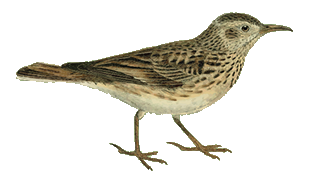Habitat
Very selective regarding its habitat, its presence is conditioned by two factors: relief and type of vegetation.
It lives in a steppe habitat in low-lying areas (10-15%) spread over a large altitudinal gradient, from sea level until an altitude of 1400 meters. At the microhabitat scale, the floral composition isn’t a determining factor as it is composed of a great diversity of vegetation formations throughout its distribution area (Genista pumila shrubs, espeglares, Genista Scorpius shrubs, rock roses/thickets, rosemary, etc.).
The habitat selection is relatively strict regarding the vegetation structure. Generally, it requires small-sized (20-40 cm) pillow-shaped shrubs that bring a nesting site and a protection from potential predators. However, in the northwest part (Zamora) of its distribution, it comes to occupy Cistus ladanifer gum rockroses up to 2 meters high. Moreover, it prefers areas with a high percentage of bare ground that allows it to move by leaps according to its mainly nesting preference.
The species rejects thymes and pasture areas with a major herbaceous and crops coverage; these are marginal habitats from which juveniles set aside. At a landscape scale, the connectivity, the size of the patch and the composition of the landscape matrix impact on the probability of presence and the pattern of distribution of the species.
Copyright © 2020 - Aviso Legal | Acceso | Desarrollado por Cesefor





